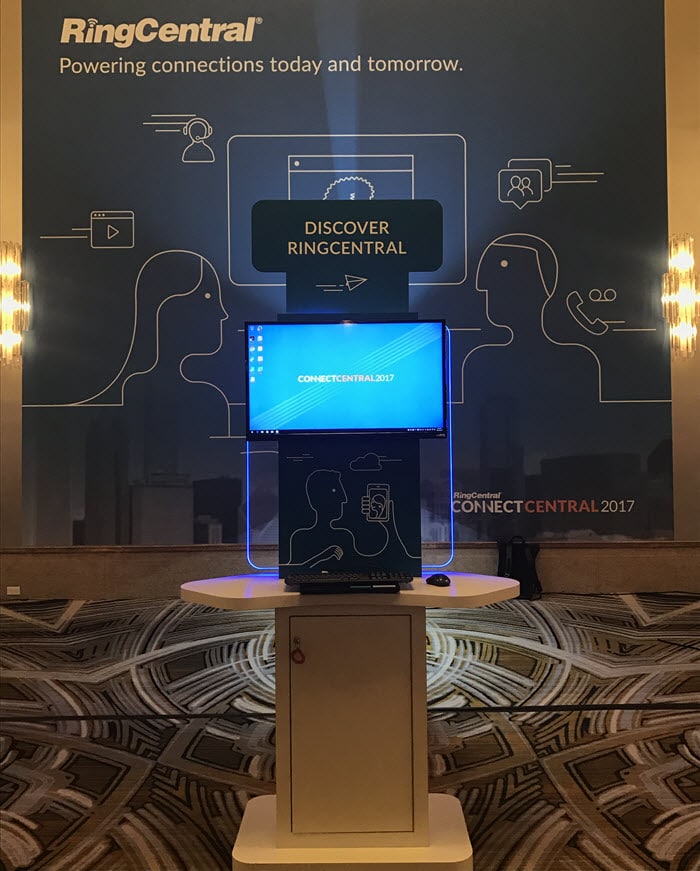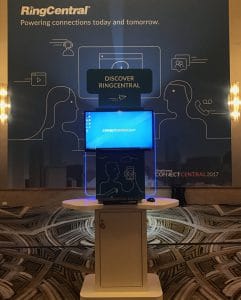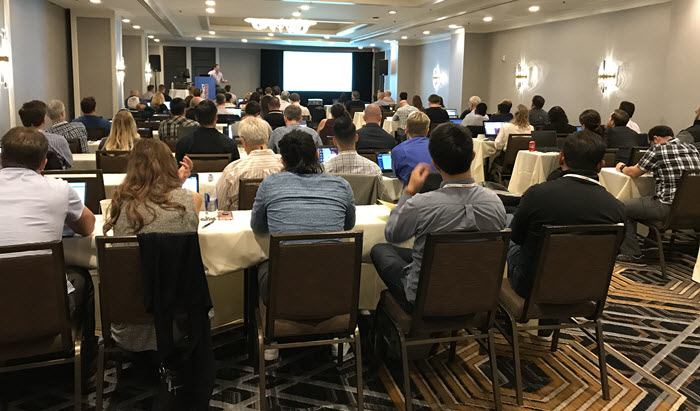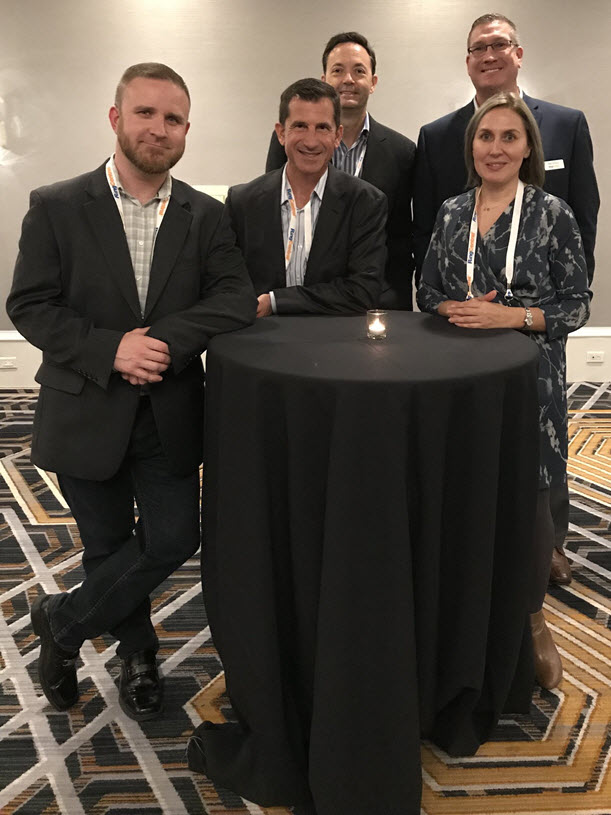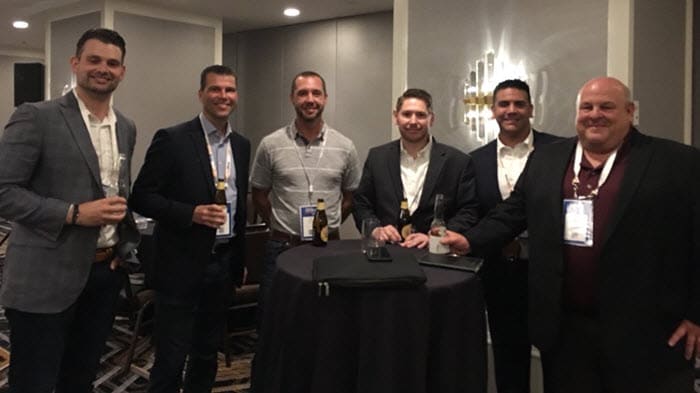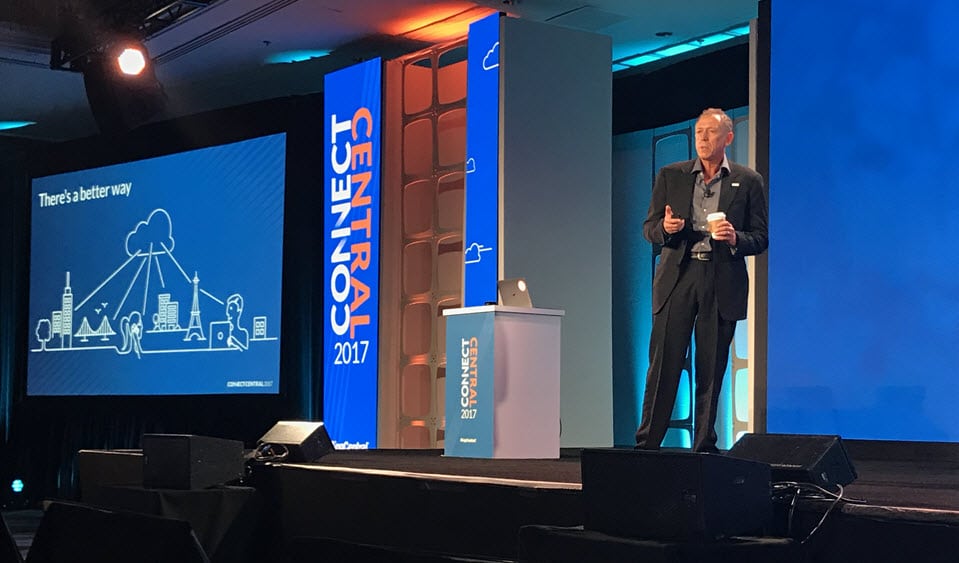The first day of RingCentral’s ConnectCentral annual conference included a series of RingCentral University sessions offering in-depth training to those responsible for managing their organizations’ product and solutions experiences.
RingCentral Office training was divided into two levels, with the Level 2 class delving deeper into debugging network issues (for example, related to the Session Initiation Protocol or SIP). The Level 1 class touched on those issues also, with an emphasis on the most commonly useful troubleshooting tips, but also took a broader look at the RingCentral platform, including RingCentral Meetings and Glip. A third session focused on RingCentral Contact Center.
RingCentral Director of Solutions Engineering, Josh Davis, led the Level 1 training group through an overview of the topology of the RingCentral cloud and how it connects to the customer’s network, explaining how architectural components like Session Border Controllers ensure secure and reliable connections for call sessions. Much of the information he shared is readily available through the success.ringcentral.com portal, but he made sure to highlight critical documents like the “Network Requirements and Recommendations” Knowledge Base article. “This is the bible for RingCentral—if you follow these guidelines, you’re going to have a successful rollout,” he said.
Davis also pointed to servicestatus.ringcentral.com as a resource for getting not only overall status of the RingCentral cloud but a custom view keyed to a specific phone number. “If you have any issues, that’s a good place to start,” he said.
He also provided tips on the most likely causes of complaints. For example, if someone complains about static on the line, that is most likely the result of an electrical issue like a frayed headset cord or electromagnetic interference. Other issues like voice distortion are more likely to be related to network congestion or insufficient bandwidth.
Training specialist Carolyn Gunther followed up with a tour of the RingCentral administration tools for setting up and configuring user accounts and assigning phones. Specific tips that attendees expressed the most interest in included the ability to define templates for user account settings, for example, to assign the same E911 emergency calling address to a whole batch of users rather than one at a time.
In addition, she spent a substantial amount of time covering the use of Glip, RingCentral’s team messaging and collaboration software, and RingCentral Meetings for online meetings and screen sharing, including the ability to launch a RingCentral Meetings session with a team from within Glip. Attendees were assigned to Glip team conversations according to their industry so they all had a chance to practice.
Gunther advised everyone to get familiar with the articles available at success.ringcentral.com and to also explore community.ringcentral.com, the online community where visitors have the opportunity to ask questions and make product suggestions. “Now that you’ve paid for training and made time for this, I encourage you to really get involved with the RingCentral community,” she said.
Lorenzo Russo, a help desk engineer with Smart Sourced IT, said he has been learning about the elements of the RingCentral solution in bits and pieces, but the day’s opening presentation from Davis “connected all the dots.”
During the group discussion, Russo also shared that his firm takes advantage of RingCentral’s open platform for integration by tying it together with Zendesk in an application that automatically starts a ticket or adds to an existing one based on the caller ID of an incoming call. Without even needing to look at the separate call log in RingCentral, Smart Sourced IT employees can see a record of all the calls in context, he said.
“I’m glad I came today,” said Cara Layne, an IT administrator at the California Apartment Association, an industry trade group. The university sessions were an optional add-on to the conference, and Layne said it was worth it to learn about new features like RingCentral Quality of Service Analytics reports as a resource for debugging issues reported from offices across the state.
More broadly, she said her organization has a mix of moderately technical users and those who are not technical at all. “It’s great to grab some things here and then translate,” she said, meaning she can go back and explain things in the context of her organization’s business processes, she said.
The afternoon of training was followed by a very warm welcome reception hosting for all customers, prospects, and partners with an evening of fine wine, spirits, and appetizers.
Originally published Oct 24, 2017, updated Sep 12, 2024
